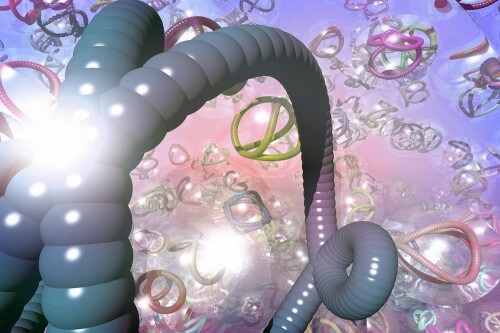A recent study conducted by scientists from Northwestern University revealed that water molecules moving through thin tubes of carbon nanotubes do not flow continuously but in a fragmented manner, similar to the movement of a car that moves and stops alternately

A recent study conducted by scientists from Northwestern University revealed that water molecules moving through thin tubes of carbon nanotubes do not flow continuously but in a fragmented manner, similar to the movement of a car that moves and stops alternately.
"Previous simulations of molecular dynamics showed that water molecules moving through carbon nanotubes are separated from each other at uniform intervals and advance in a "locked march" manner (a form of march in which the soldiers are close to each other so that the steps of each soldier exactly match the steps of the soldier in front of him), ” said Seth Lichter, a professor of mechanical engineering in the School of Engineering and Applied Science at Northwestern University. "However, our model shows that the water molecules actually progress in a fragmented manner, which allows them, quite surprisingly, to reach high flow rates of 10 billion molecules per second, or even higher." The research was published in the scientific journal Physical Review Letters.
The findings may bring a solution to the difficulties that experts in the field of fluid dynamics have struggled with for many years. In 2005, researchers - who were working under the assumption that water molecules move through channels in a constant flow - revealed a surprising discovery: the water molecules in carbon nanotubes move 10,000 times faster than expected. The phenomenon was attributed to the supposed slippery nature of the surface of the carbon nanotubes, however, further experiments revealed the rather counterintuitive role of their rough inner surface.
The researchers conducted new simulations that had a higher time resolution and which showed local changes in the distribution of the water molecules along the nanotube. These changes occurred in cases where the water molecules were not in the perfect position in relation to the spaces between the different carbon atoms, which created areas where the water molecules are unstable and move quickly and easily along the nanotube.
Nanochannels are found in all of our cells, where they are responsible for regulating the flow of fluids in and out of cell membranes. Nanochannel structures also have promising industrial applications for water desalination. The use of the principles of fluid dynamics that have just been revealed could improve other applications, such as: chemical separations, batteries operated on the basis of carbon nanotubes, as well as the production of quantum dots and nanocrystals for use in the electronics industry.
The news about the study

One response
It is interesting if nano materials can also be superconductors for electronics. For building an efficient and cheap electrical infrastructure.